Christchurch: When the Earth Shakes
Christchurch, New Zealand
The South Island
From this angle, look at the roofline and the front of the church versus the back. They're actually not equal. The front triangle is equilateral, but the one at the back is an isosceles triangle. Our guide told us the reason for that, but now I don't remember.
Friday evening, March 15
& Saturday, March 16
After arriving in Christchurch by scenic train and checking into our last of the tour hotels, Mary and Meghan and I set out to find a good pub, and immediate stumbled across The Church brewery inhabiting an obviously legit church building. It seemed appropriate for dinner in Christchurch.
This is a nicer one of Mary but we thought the photo looked fake, like she was in front of green screen. The Church really looked like this. Rugby was on the big screen and the place was hopping.
Saturday
For the last day of our New Zealand tour, we followed Colin on a walking tour of downtown Christchurch.
Christchurch was hit by more than one devastating earthquake (September 2010) or aftershock (February 2011) now 14 years ago, and many of the city's buildings were damaged beyond repair or destroyed. The city is still rebuilding.
One of the first buildings we saw was the Anglican cathedral - just called ChristChurch Cathedral - still very much in the process of being restored. Its rose window and bell tower survived the November 2010 earthquake but crashed to the ground during the major February 2011 aftershock.
The front of the church here isn't exactly what it appears to be. It's a plastic cover with an image of the windows and stones on it, the way it used to look - and maybe will again?
Every city has its World War I and II memorial. It was a chilly morning.New Zealand sits right on the fault line between continents, which explains how the islands rose from the sea, unless you prefer the legends the Maori tell about how Maui pulled the islands up from the sea with his fishing pole. It's a pretty good story.
This map I borrowed from Britannica's page about these earthquakes shows where they hit, right in the city center.
The Anglican congregation needed a church as soon as possible after the earthquake, so they looked around for help, as well as what local resources might be available. With the help of Shigeru Ban, a Japanese "disaster architect," they built what they call The Transitional Cathedral, but everyone knows it as The Cardboard Cathedral.
Inside you can see the cardboard tubes holding up the roof.
"The architect initially wanted the cardboard tubes to be the structural elements, but local manufacturers could not produce tubes thick enough, and importing the cardboard was rejected. The 96 tubes, reinforced with laminated wood beams, are "coated with waterproof polyurethane and flame retardants" leaving two-inch gaps between each so that light can filter into the cathedral."
Our guide Chas Muir, a member of the congregation who volunteers to explain the church to visitors, told us that church members helped in the construction process, and described them all coating the huge cardboard tubes with lacquer.
Chas was a wonderful guide - very interesting, engaging, and funny, as well as serious when he needed to be.
The images on the triangular windows are replicas of shattered pieces of the original cathedral's rose window.
The most touching and sad story Chas told us was of the terrible collapse of the CTV building next to the old cathedral during the February 2011 aftershock, killing 115 people including 27 Japanese students who were studying English. Their families commissioned this sculpture that represents the students and their families by a particular New Zealand tree called the kahikatea, a type of white pine. Its roots are shallow but intertwine with the roots of other kahikatea nearby, so together the trees can grow tall and stand together.
When we left the Cardboard Cathedral, we headed towards Quake City, a museum dedicated to the Christchurch earthquakes.
This piece of a longer timeline highlighted the recent quakes that caused so much destruction. Visitors were quiet, as the facts themselves created a somber memorial. In one room we watched video clips of different people telling their stories about the days of the quakes, and what they saw and experienced. We moved past the exhibits carefully and slowly, and it felt disrespectful to take many pictures. Having said that...
Except out in the gift shop there was a huge Maori tiki...
Later I found out Mary had the same idea 😄
Now that we're back to being disrespectful, I think Mary mentioned that we saw quite a few bathroom-related information posters during our visit. This one at the earthquake museum featured people's pics of their home latrines - aka "long drops" - they assembled post earthquakes when regular sewage wasn't operating.
As we walked through the city, we got to appreciate several beautiful murals.
When the formal tour was over, we were ready to take a load off our feet, as well as Mary's sore knee.
Time for the tourist tram!
We stayed on the old-fashioned trolley car to Stop 4 at Riverside Market, which sounded like a good place to find lunch. It was a mostly indoor market with food stalls galore. One of the first stalls I saw had an impressive display of candy and other yummy treats.
Here we are being those people who hang over the upstairs railing to spy on the activity below. Even though everyone on the tour was doing their own thing, we seemed to run into tour friends everywhere all day. Here we are hollering like Americans at Barb and Michael below:
I have no idea what these bon bons were, but Boom!
We found a spot upstairs and outdoors at the Kaiser Brew Garden. The day was starting to warm up, and sitting outside watching people walking towards the river was a pretty pleasant way to spend a lunch hour. As we made the obligatory pit stop on the way out of Kaiser Brew, we ran into tour friends Deb and Jerry. It just kept getting weirder. I mean, Christchurch is not a small city.
We ran into Lynne and Jennie, too, tasting more varieties of manuka honey and checking out NZ specialties. How much more can I stuff into my suitcase?
Outside, we strolled along the river towards the boat launch, only to discover there were no spots left for punting, and decided we didn't feel like kayaking. We ran into Ross and Sandee there, though, who had been smart enough to make a punting reservation.
Since boating was off the agenda, we walked to the Botanic Gardens. We took the shady path around the outer ring, noting lots of birds and trees but missing most of the many flowers on the inside.
We did find some greenhouses full of interesting New Zealand specimens, but completely forgot about our previous attempts to find the famous silver fern.
We had been searching for it off and on during the whole trip, but totally forgot this quest on our last day. At the Botanic Gardens!
Dave and Terri helped us out by sharing their pics.
Dave demonstrated how you know it's a silver fern: you have to turn over the leaf to see if the underside is silver.
In yet another tour-people-get-around incident, we found Barb in the Rose Garden looking for Michael, but by the time we shuffled to Tram stop 14 and the tram arrived to save us, Barb and Michael were already on it.
This fascinating sculpture near the Rose Garden is called Diminish and Ascend. I called it Stairway to Heaven.
After riding the tram around the city for a while, just to rest up a bit, we made it back to the hotel to get ready for our tour group's Last Evening Together festivities.
This pretty street near our hotel was a pedestrian walkway we took to our pre-dinner happy hour at a whiskey bar called The Last Word.
Here's our cheerful whiskey expert barman who helped everyone with their wee drams or whatever they were having. I tried a cocktail very much like those whiskey sours I thought were so cool back in college.
Finally we ended up at our last dinner at Fiddlesticks.
The photographer always misses the picture. That's my spot between Meghan and Ross at the closest table, with Sandee, Mary and Colin across from us.
After a steady diet of roast beef everywhere we went - except for the pescatarians who got special meals - I was dying for some seafood. The fish was called warehou.
At the back table were Lulu, Lynne and Marlo across from his long-suffering wife Barbra, then Diana, Dave and Terri on the right.
At the last table were D'Ann next to Brian, whose wife Veronica missed the dinner due to a nasty bug. Jerry and Debbie were across from Michael and Barb, then D'Ann's Brad and Jennie.
Someday when we're looking back on this blog, Mary and I might need a little reminding of our tour friend's names, so that should help!
Colin had some parting words for the group, and Lulu did a haka for us. She may have startled some of the other restaurant guests, but when a Maori wants to do the haka, she does the haka.
- Christine


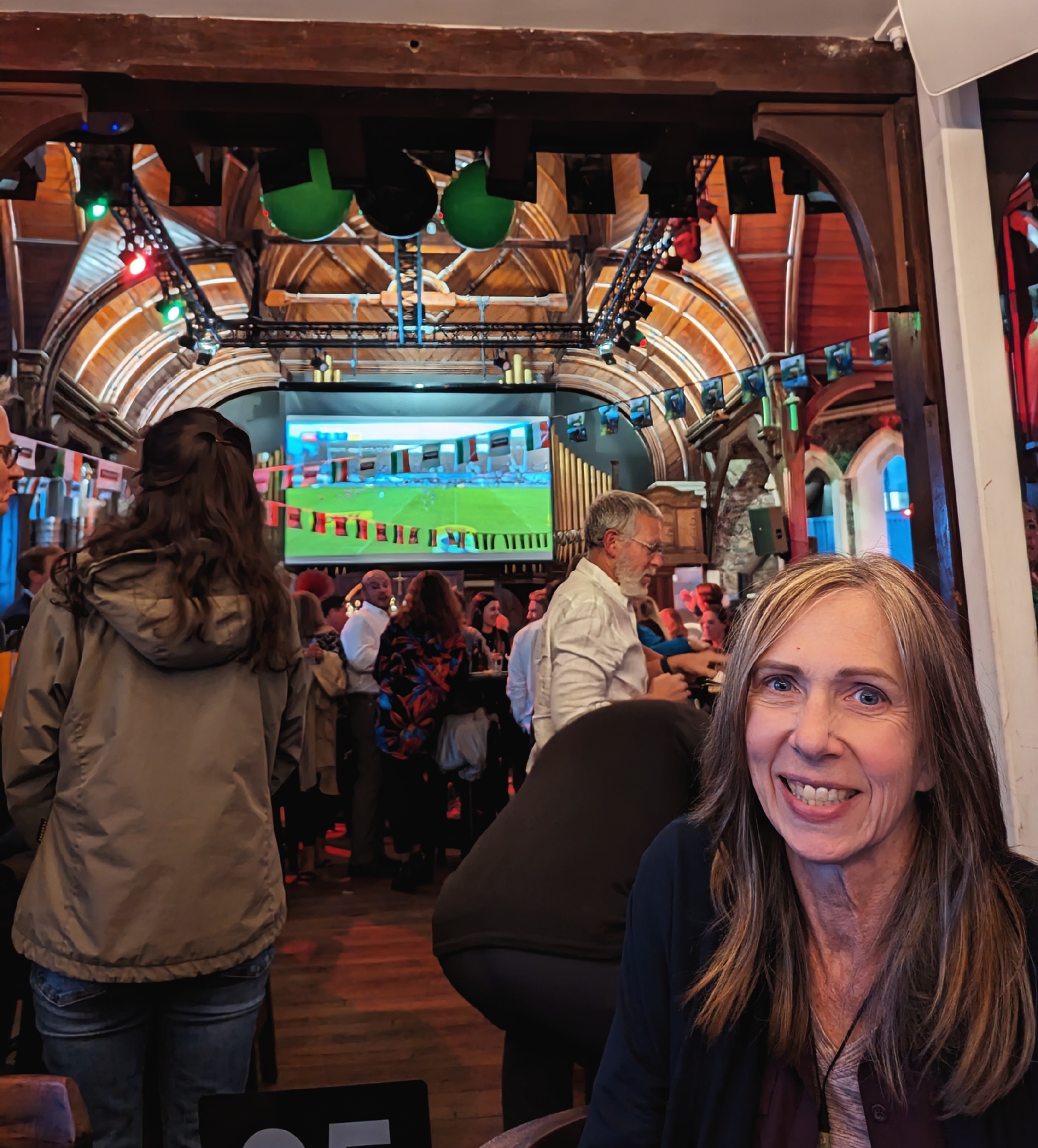

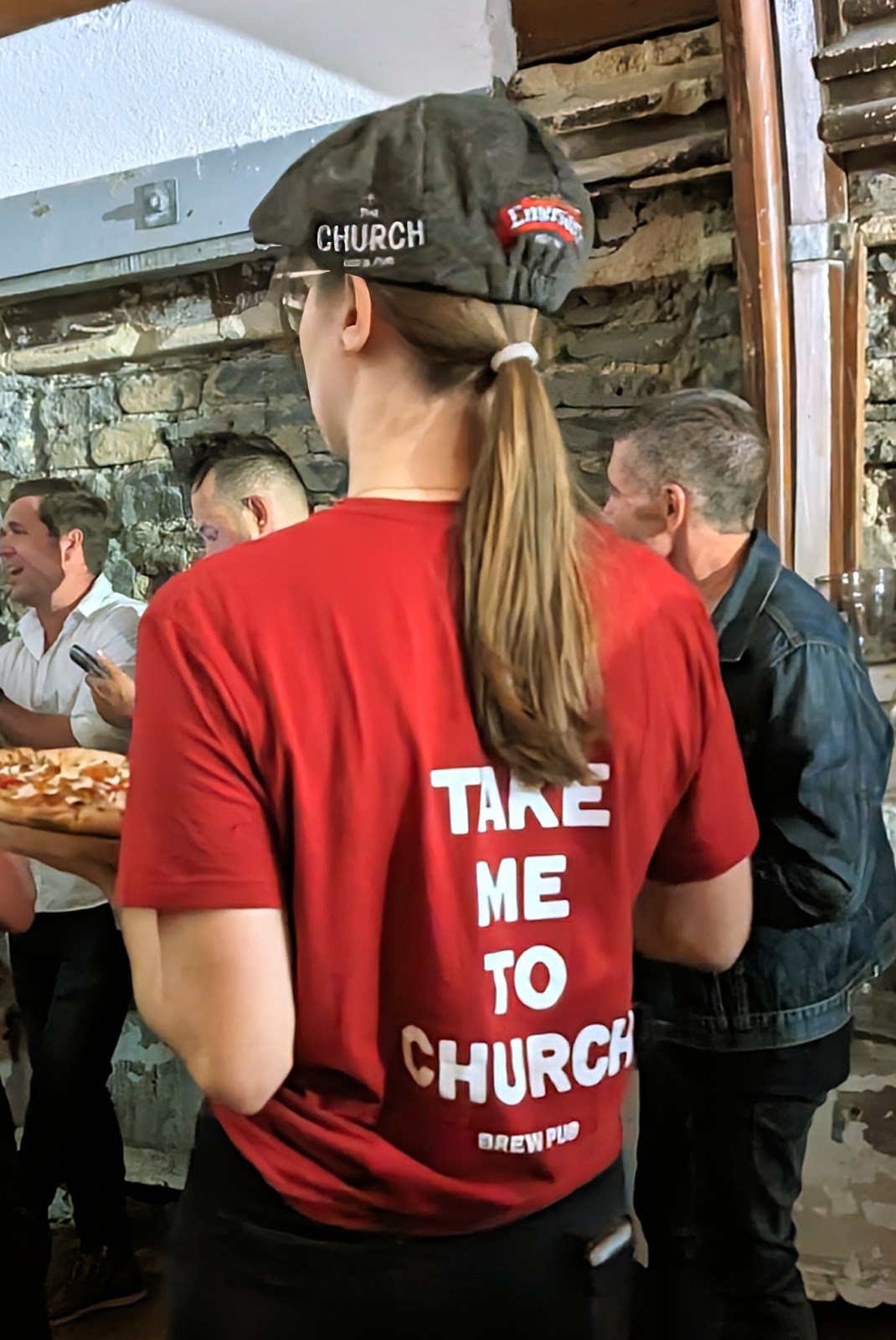






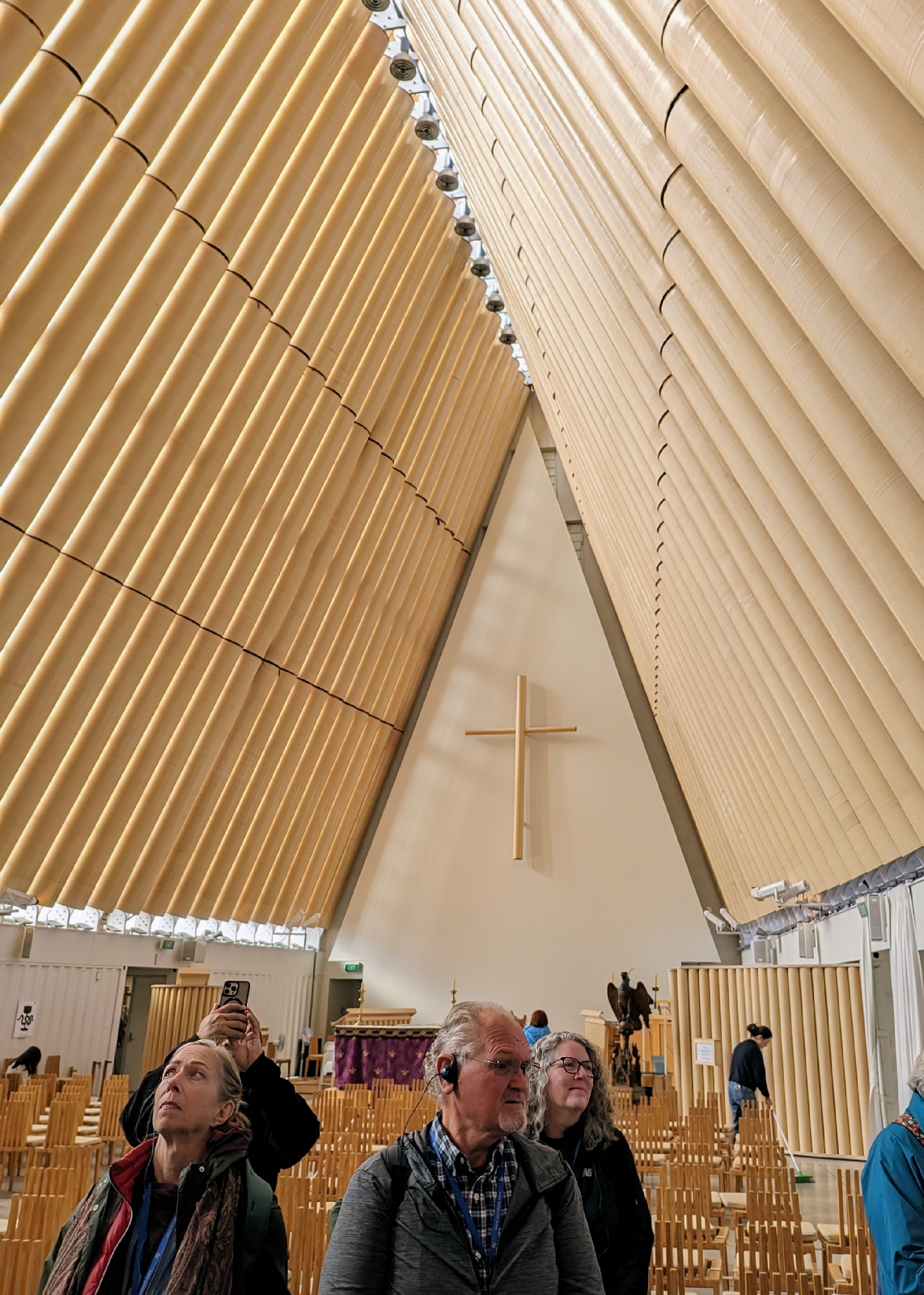





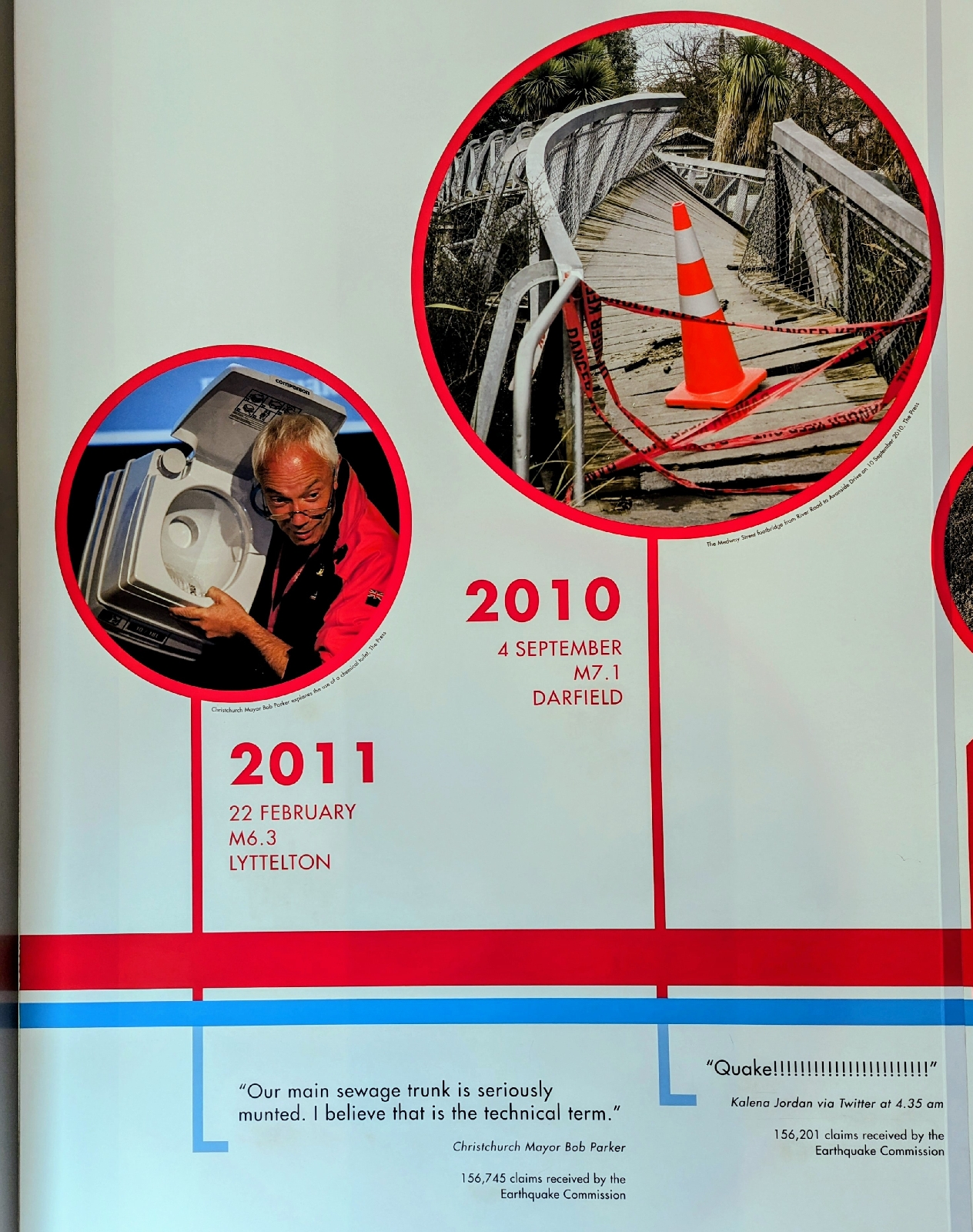

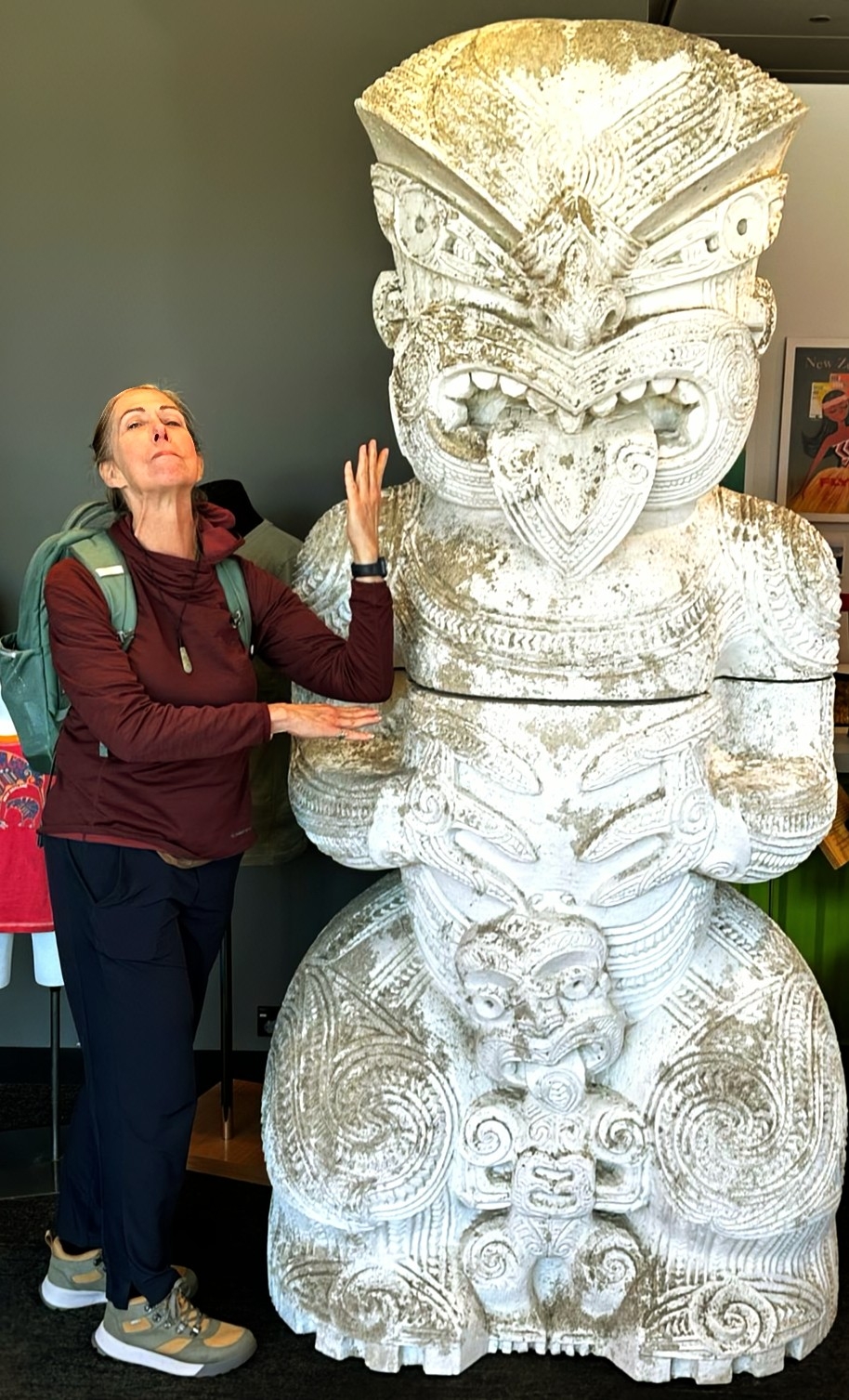
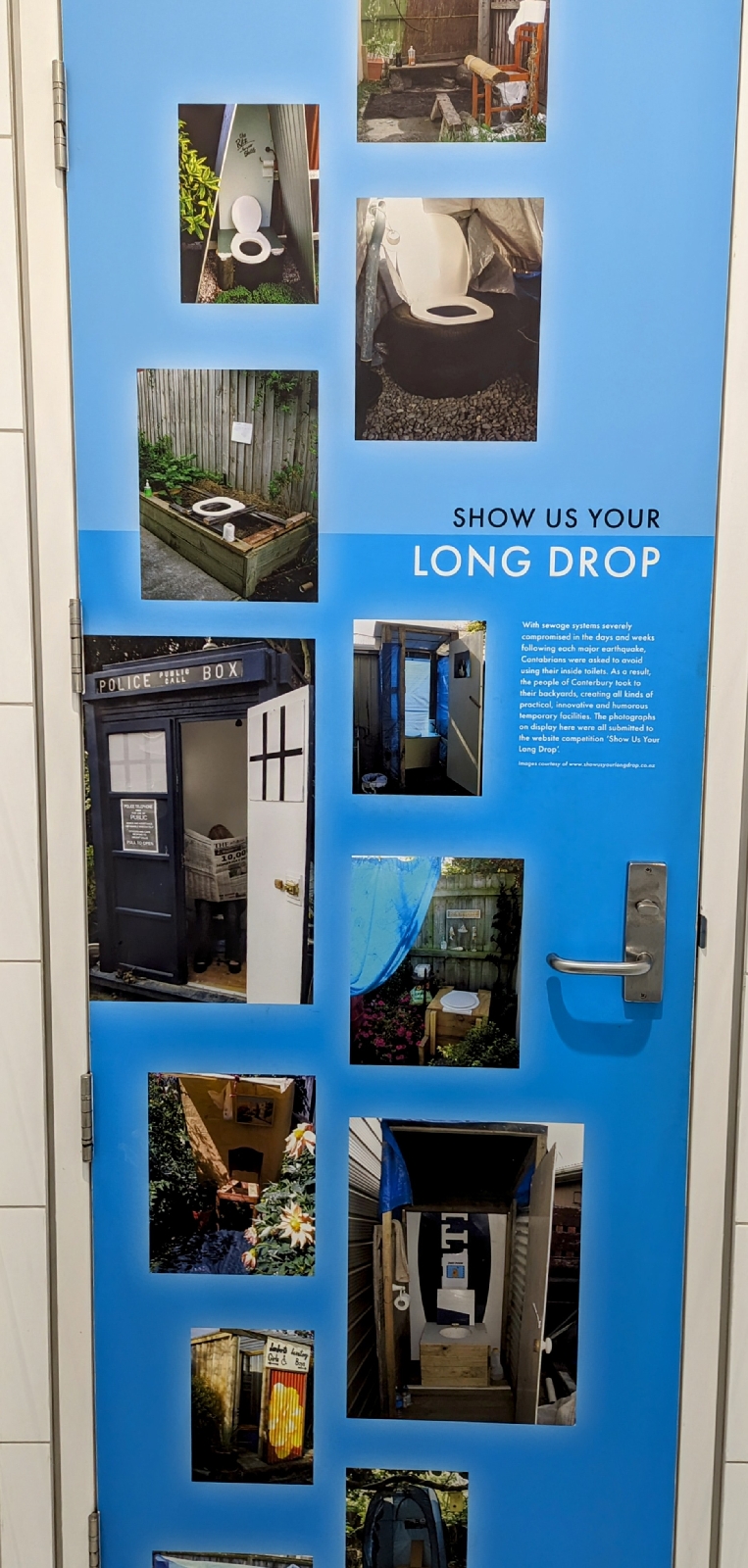
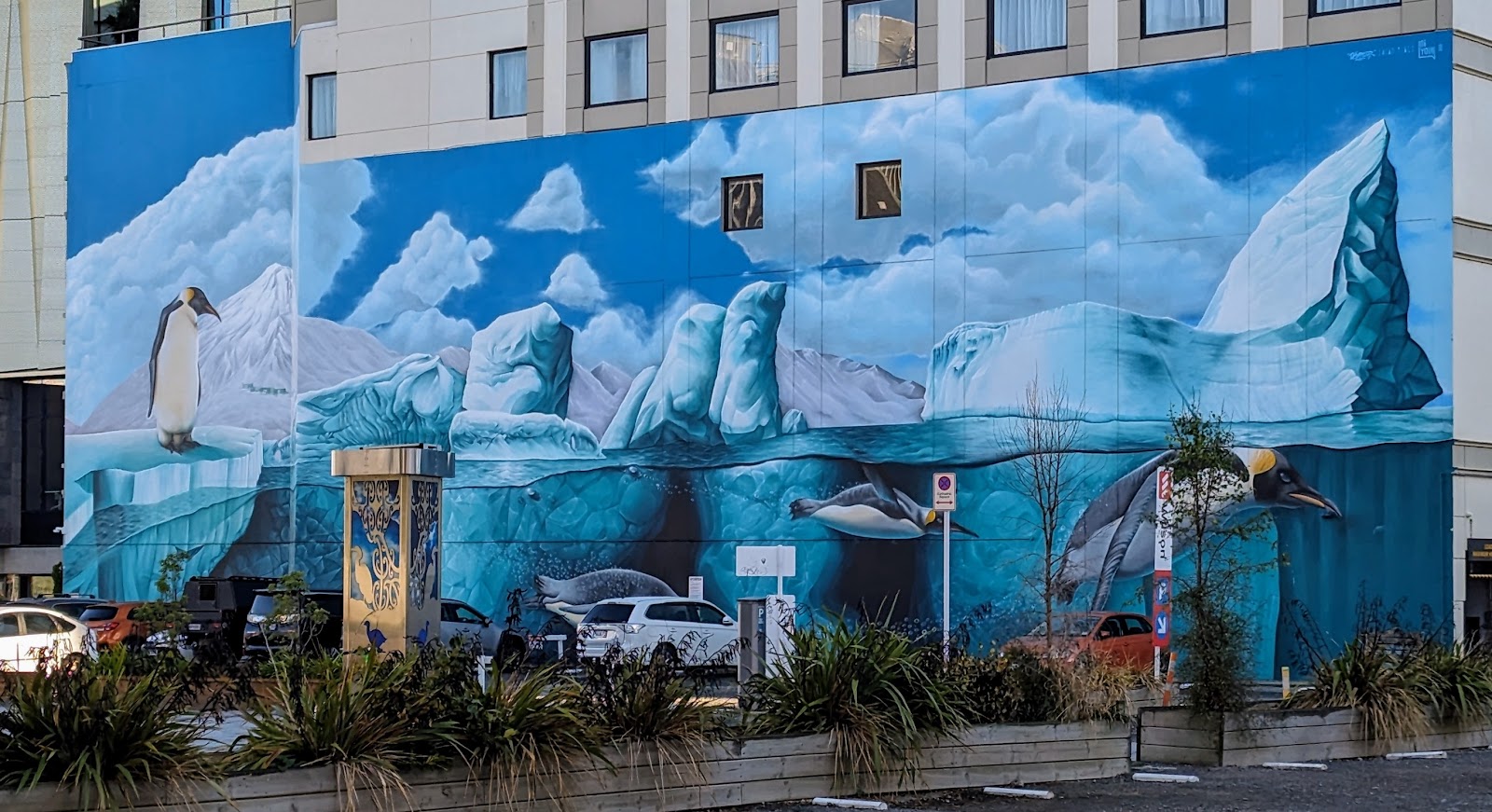

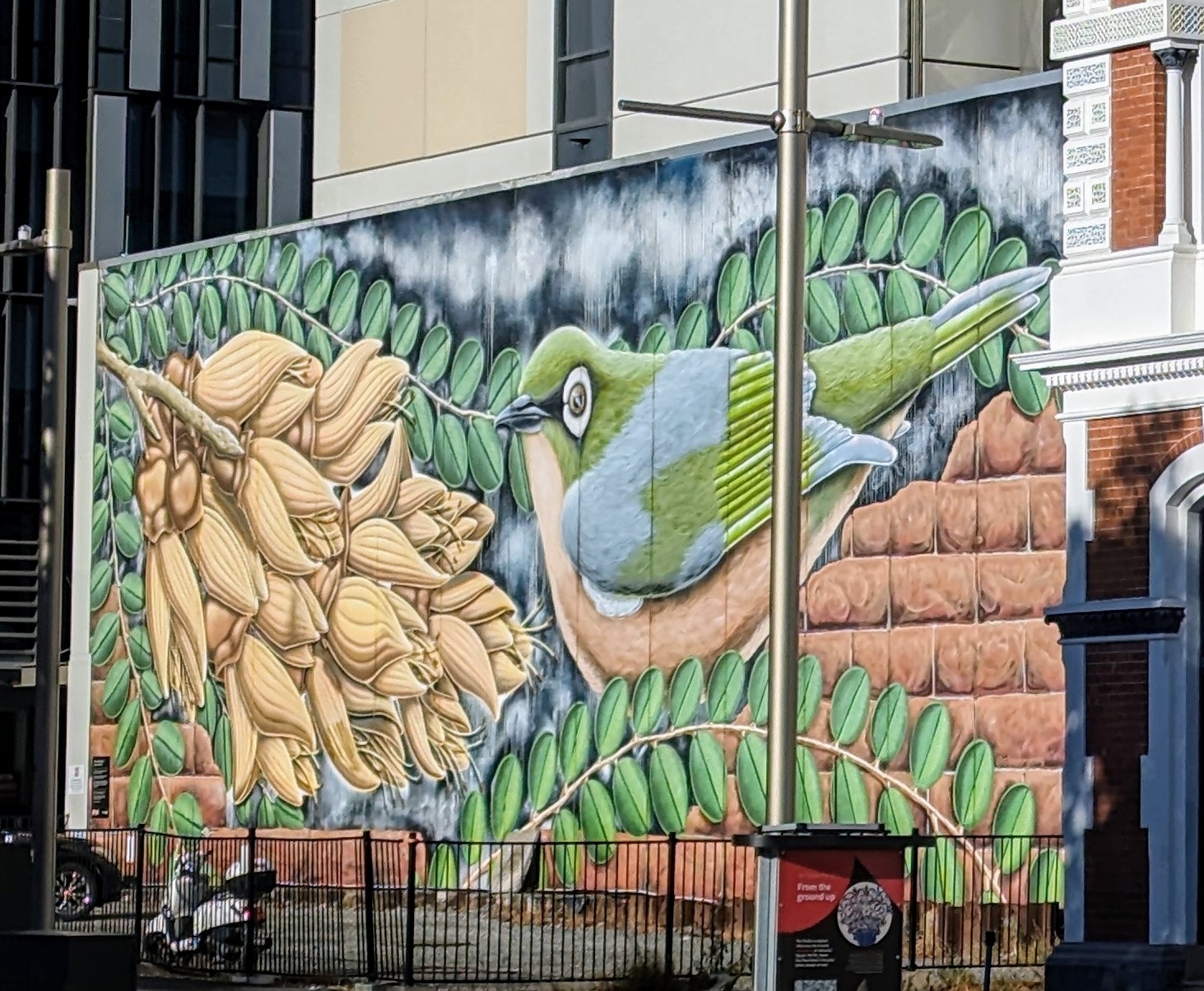

















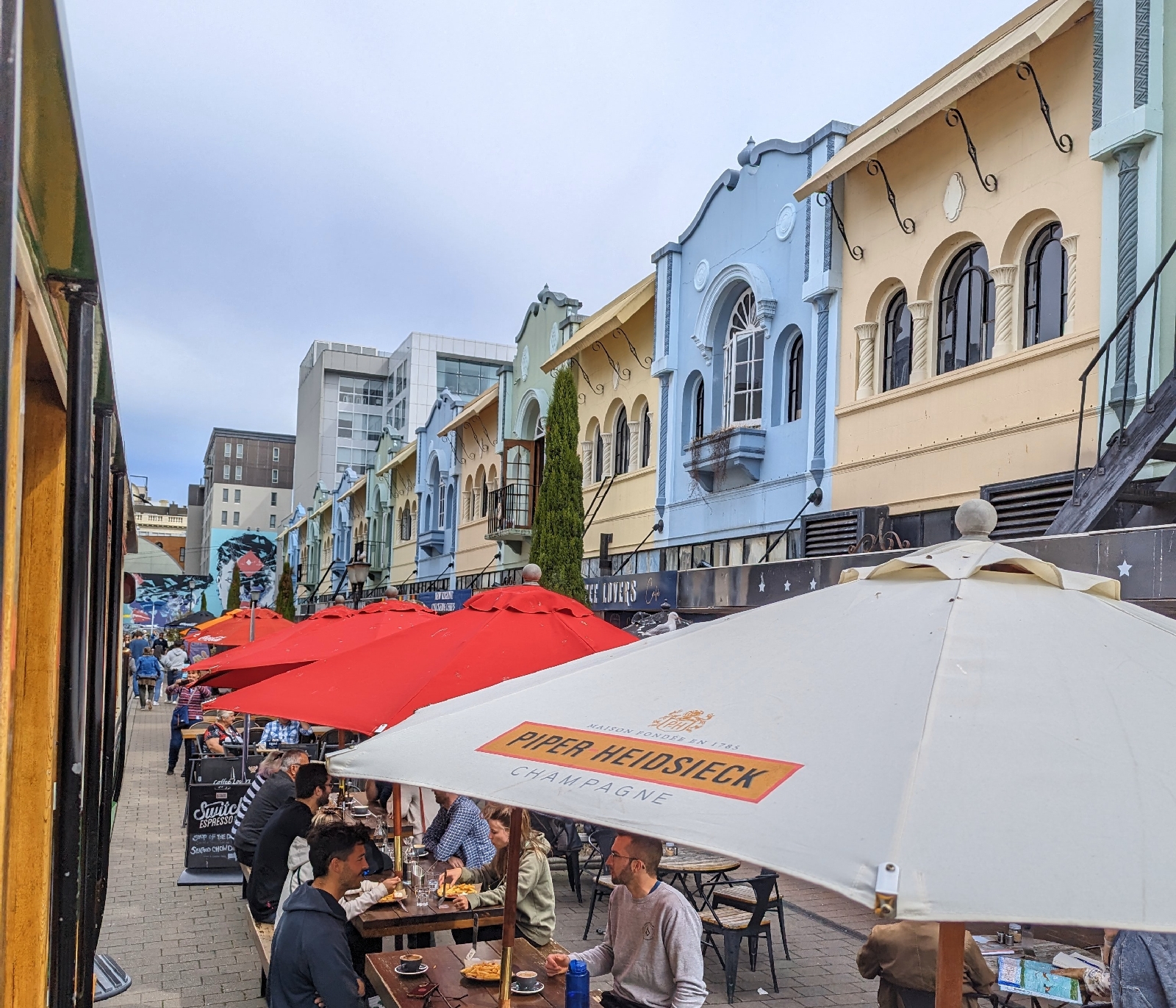
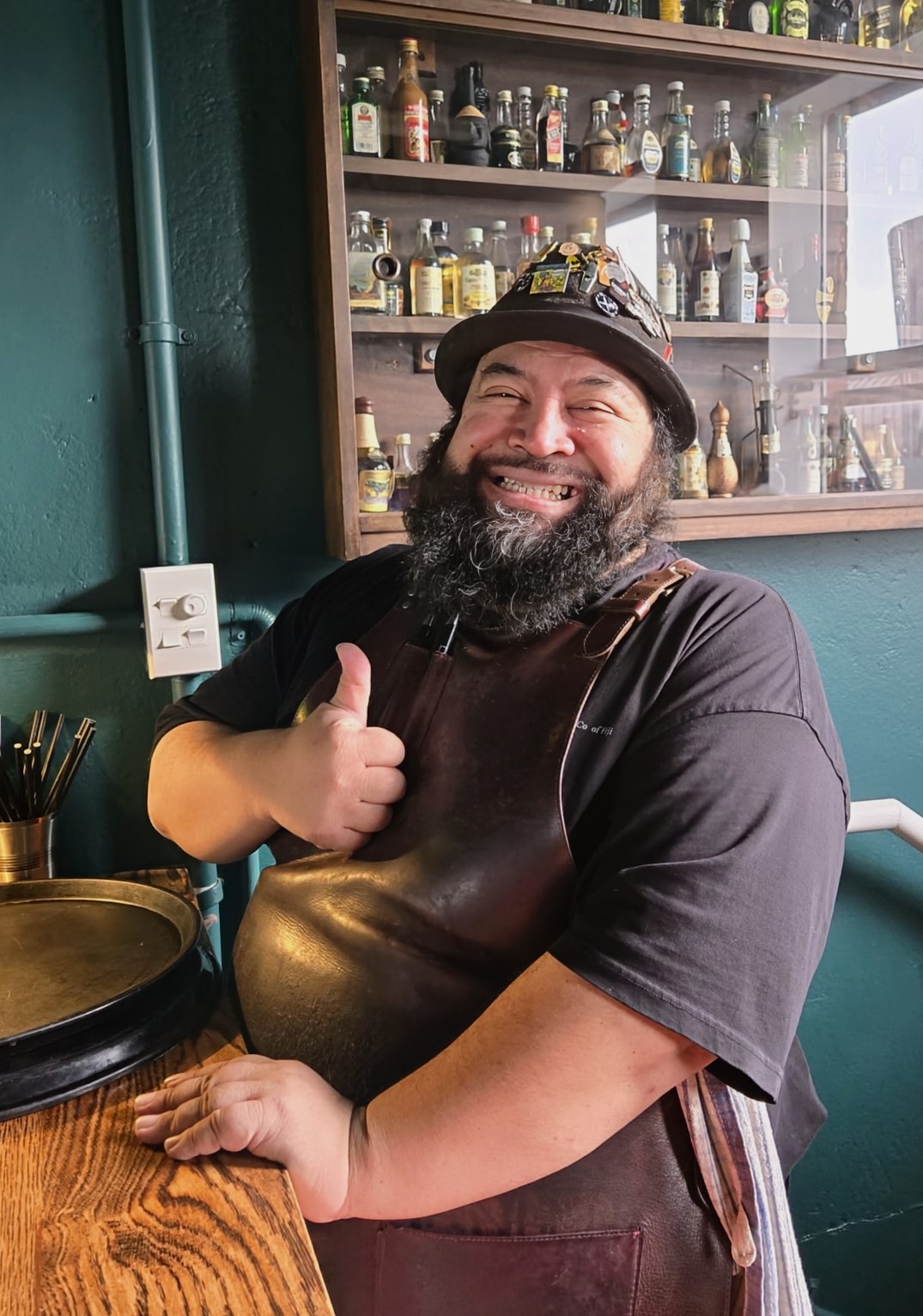


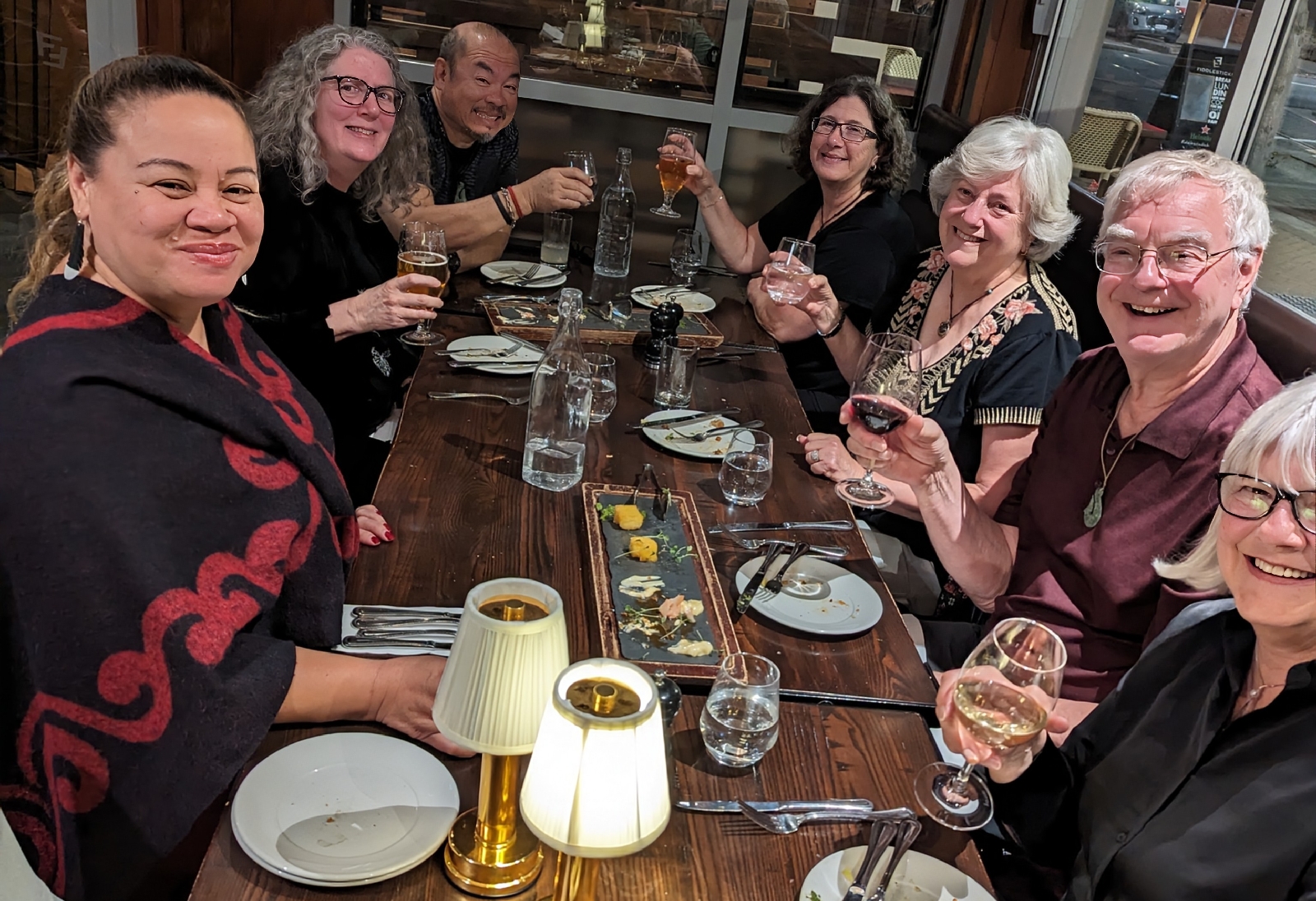





Comments
Post a Comment